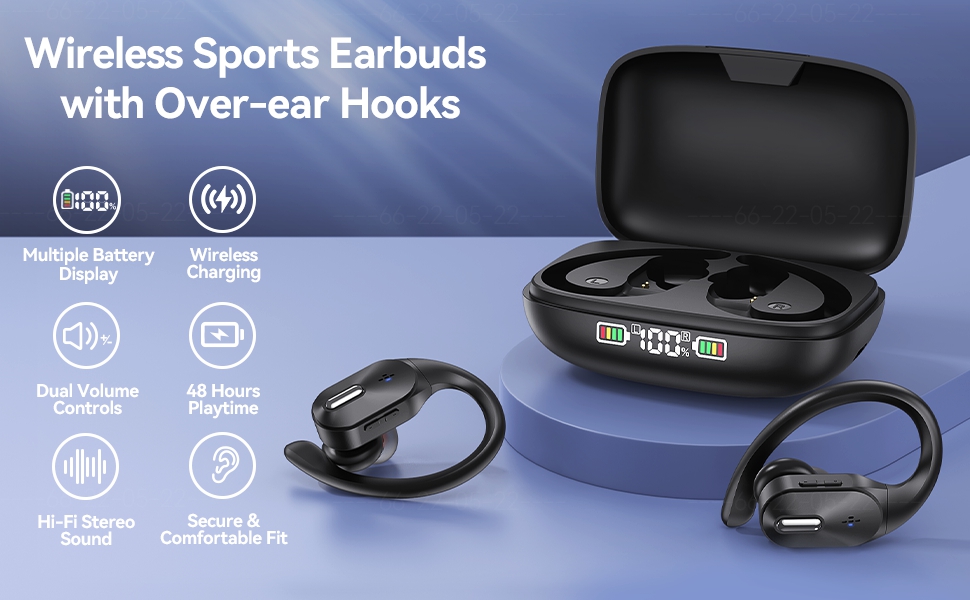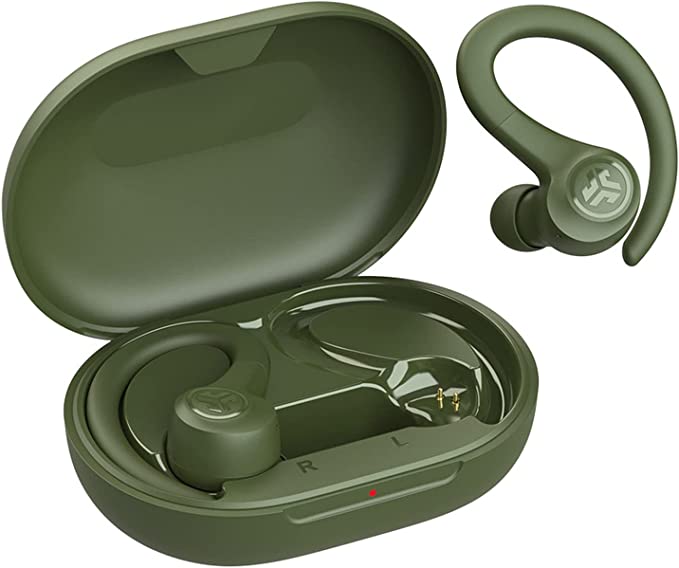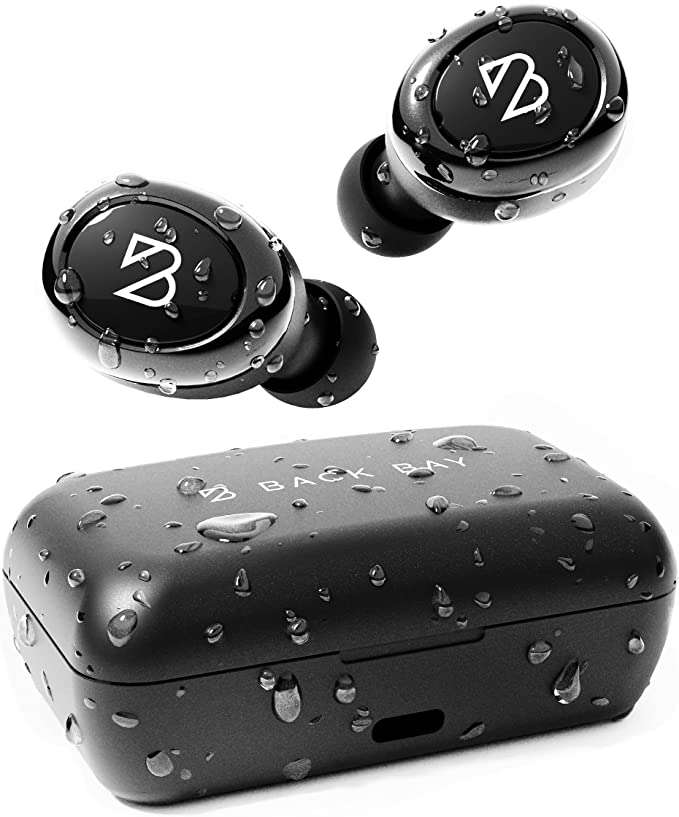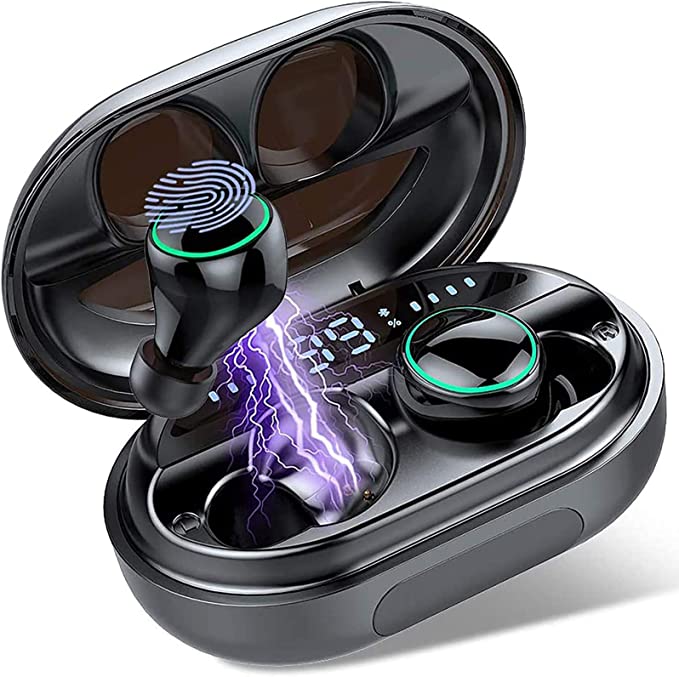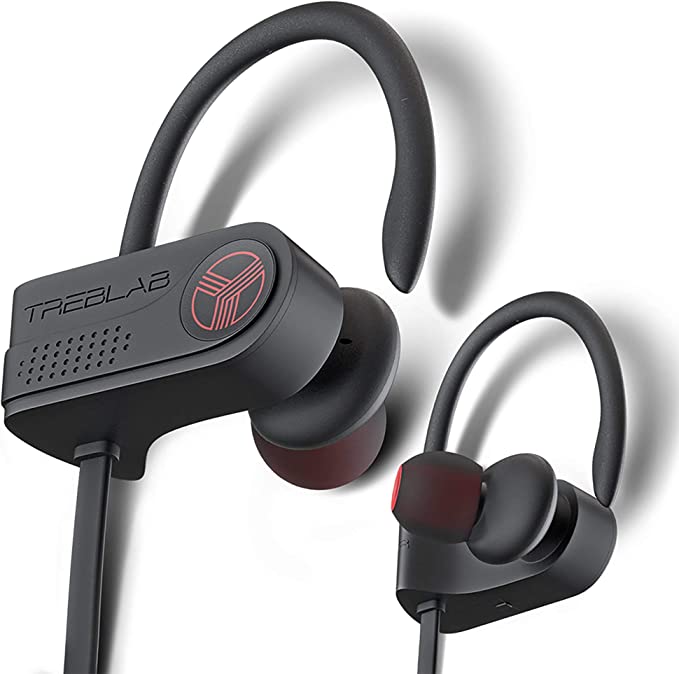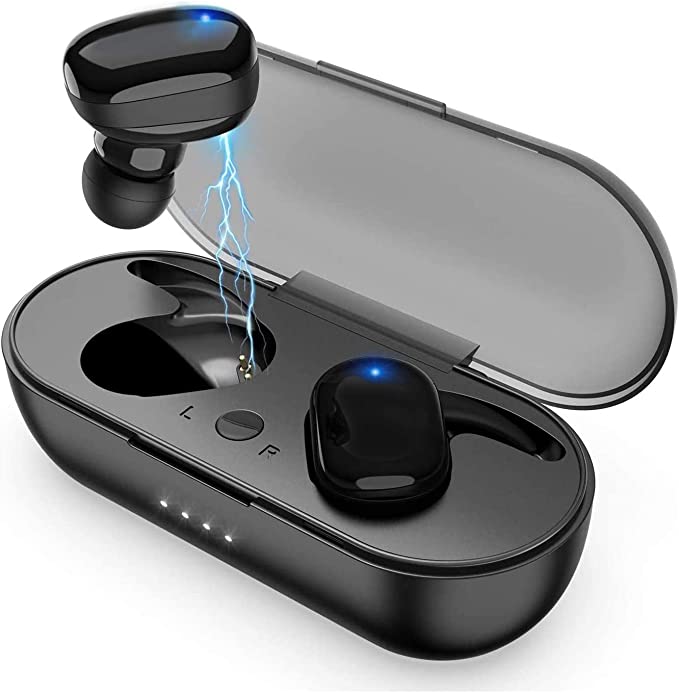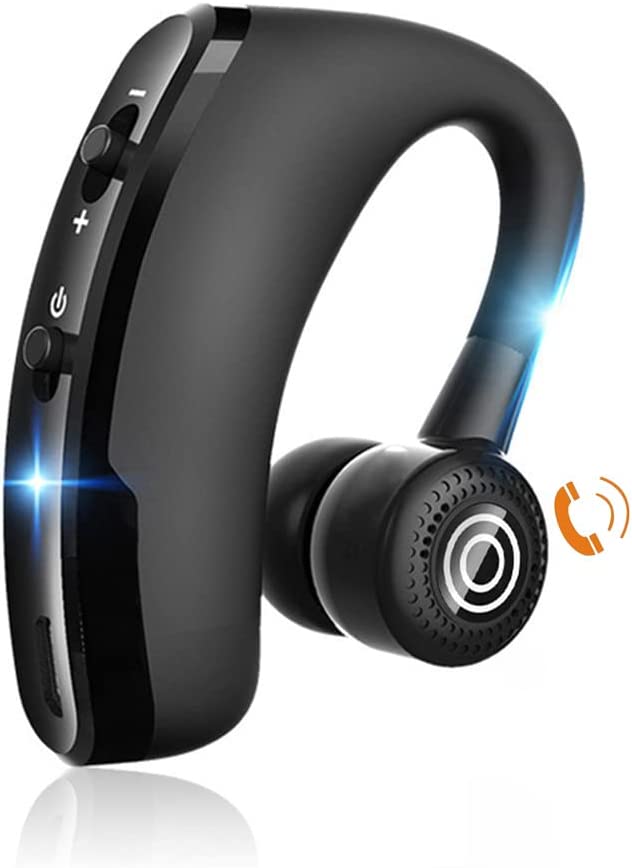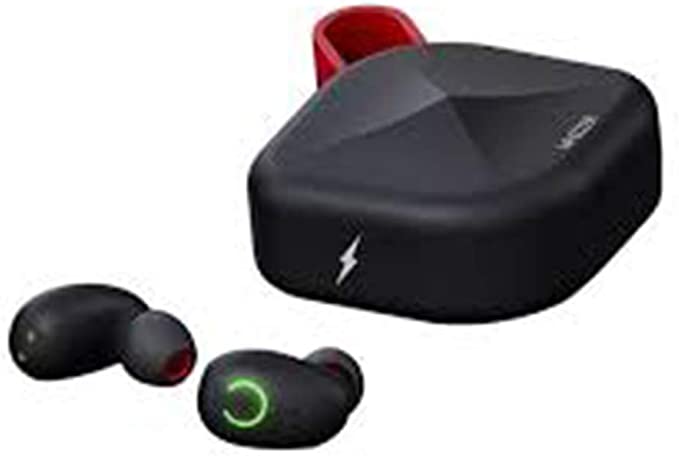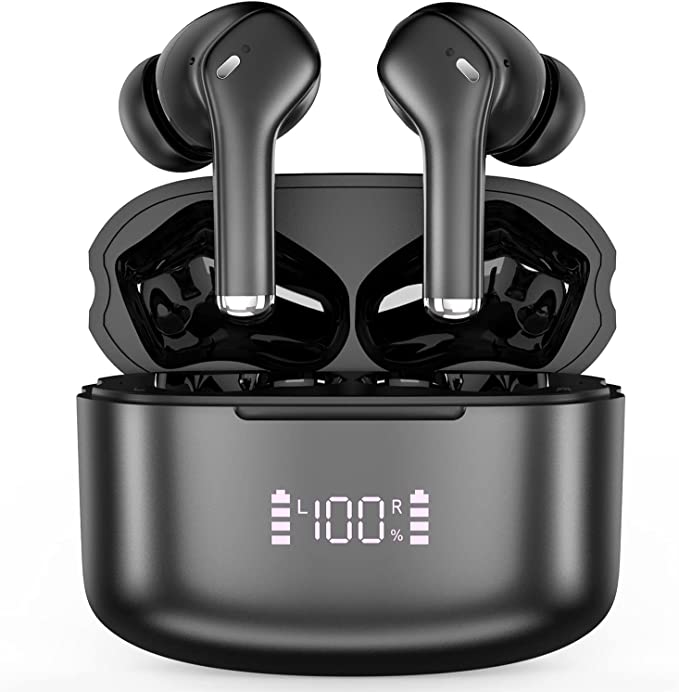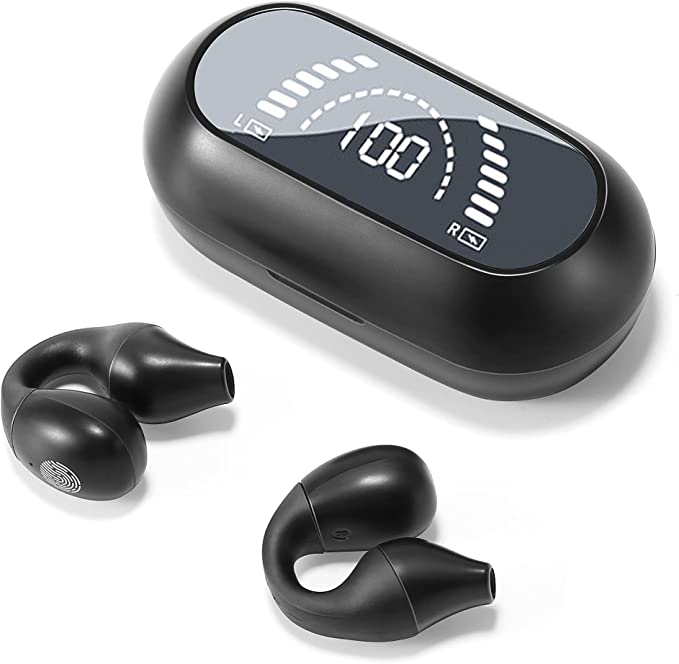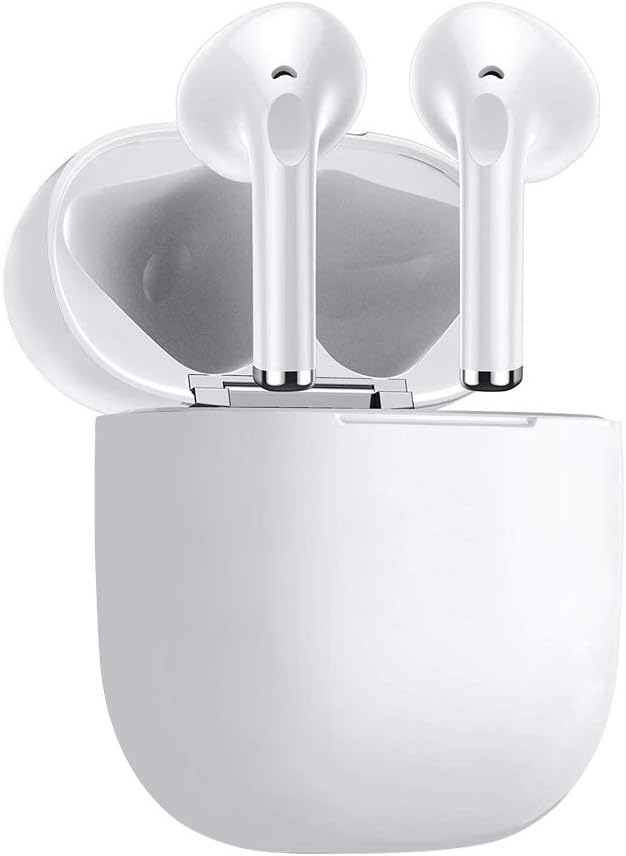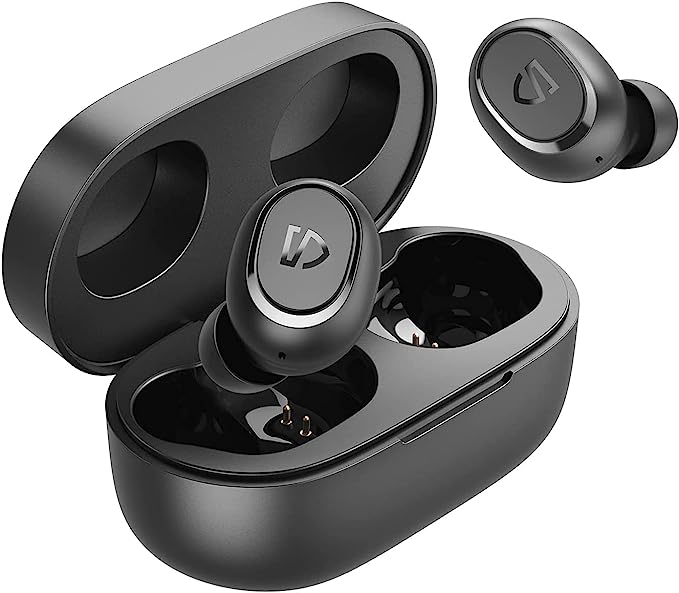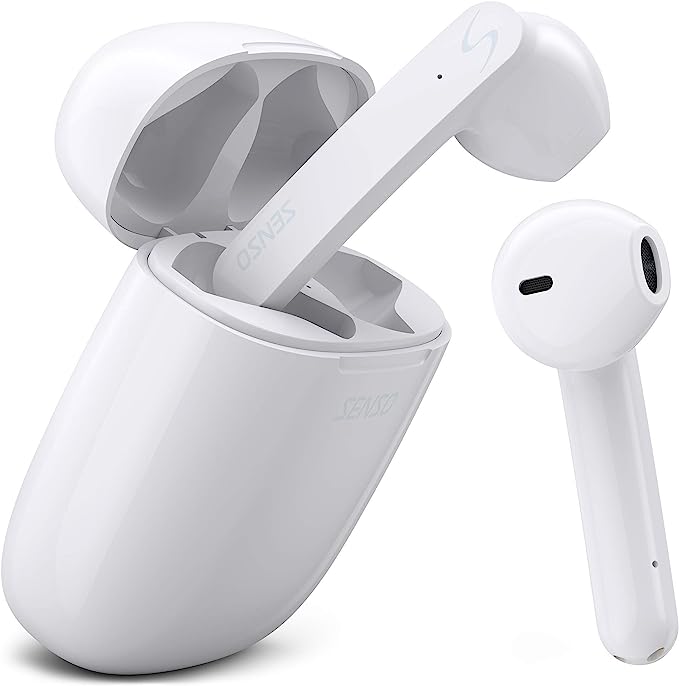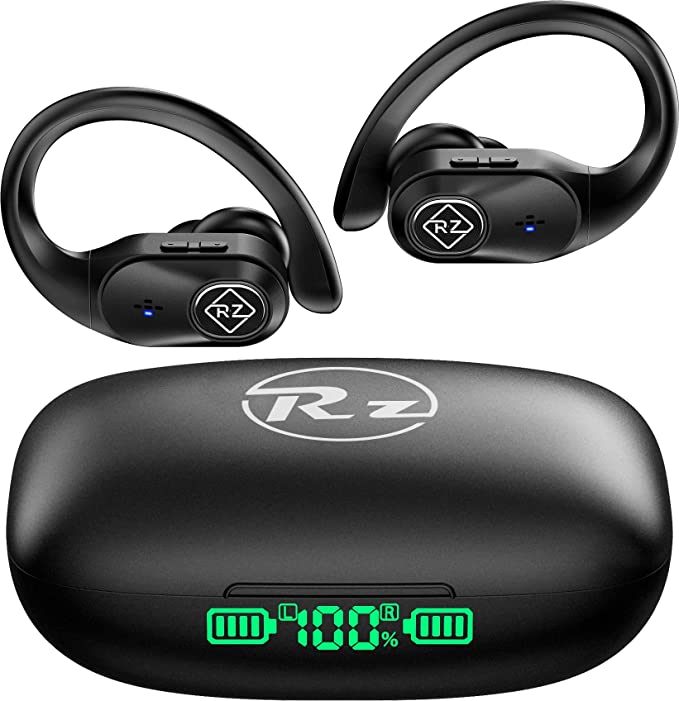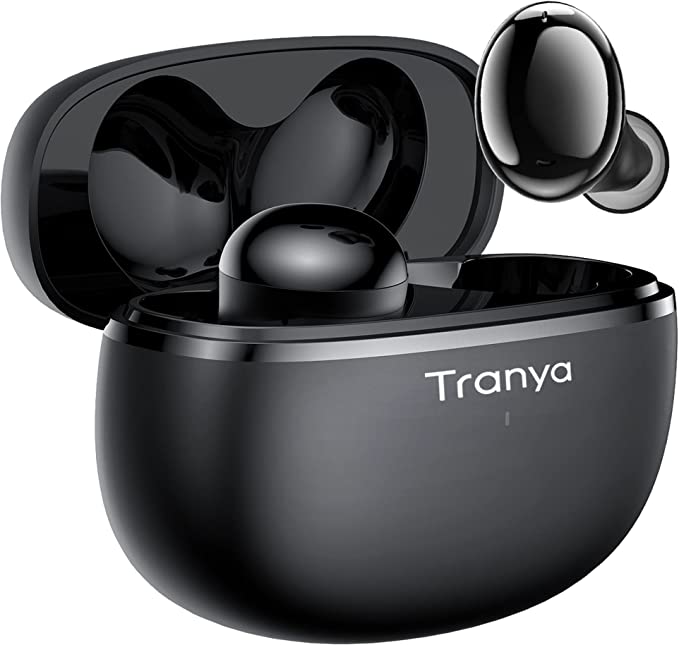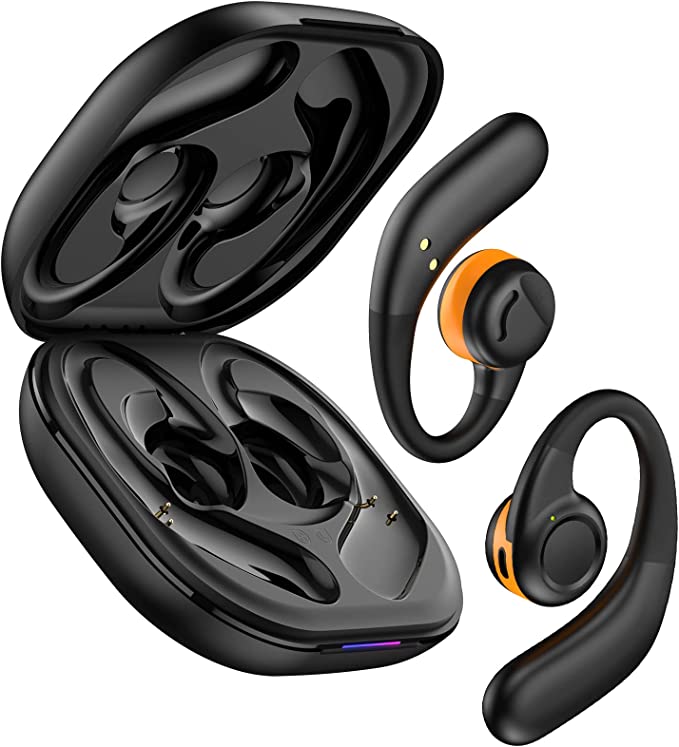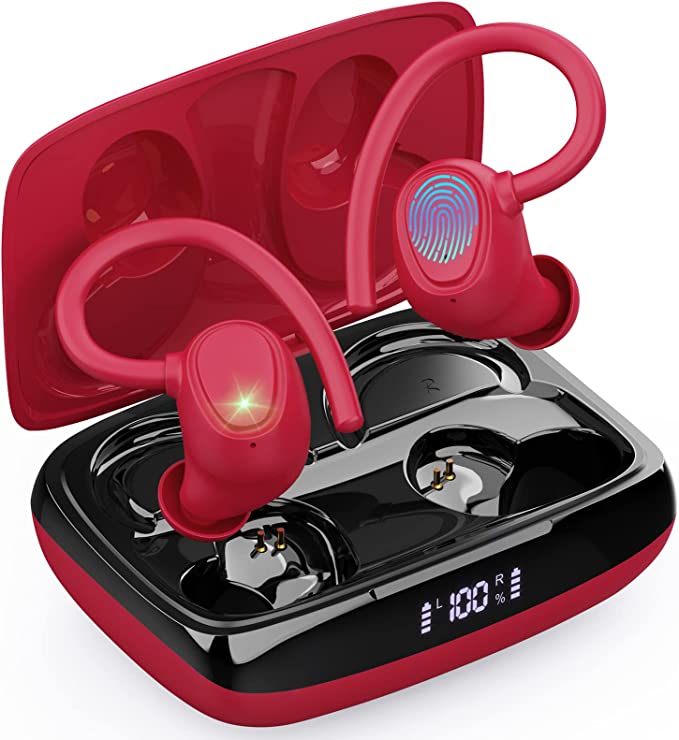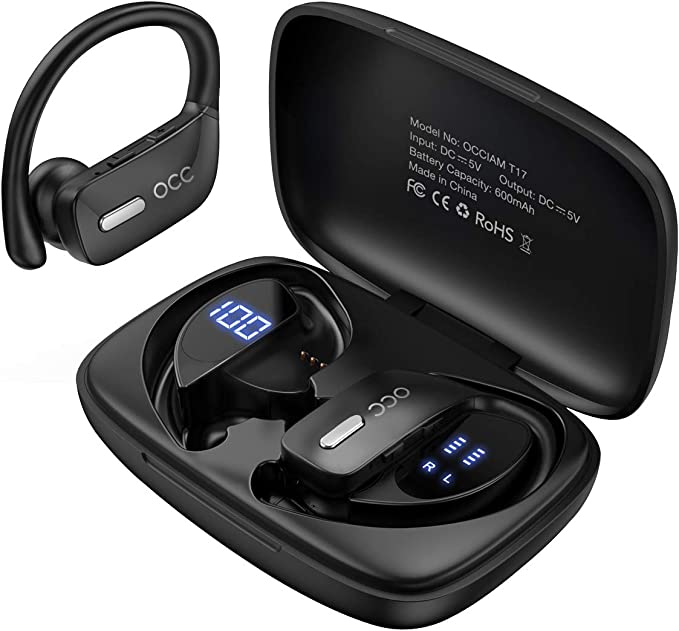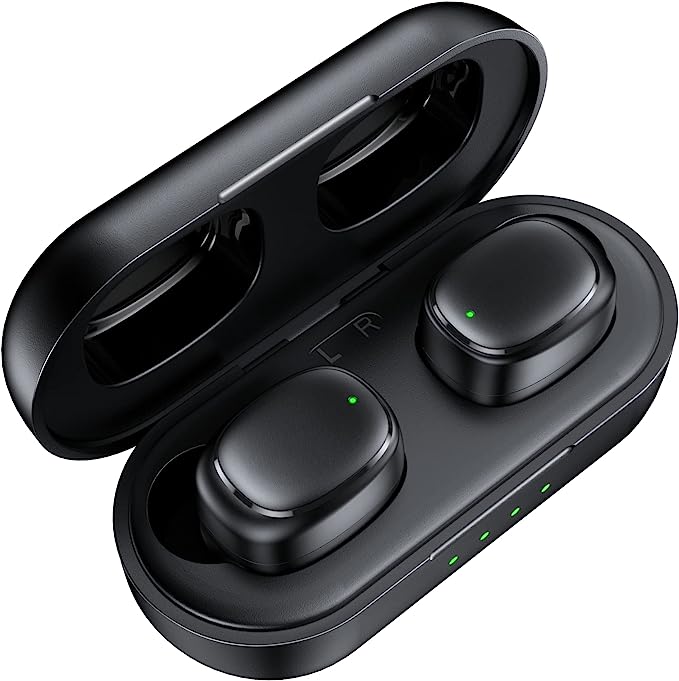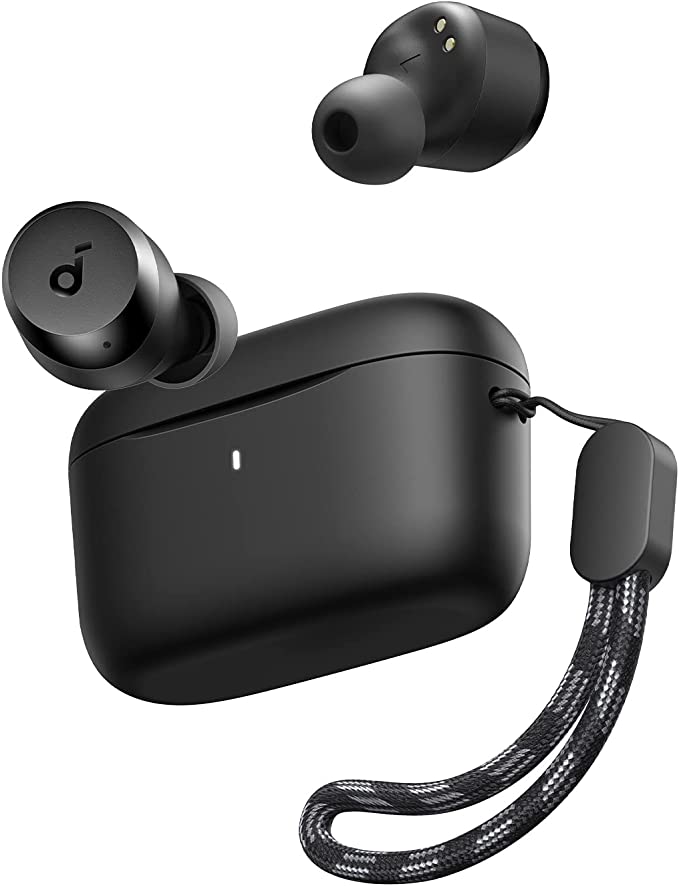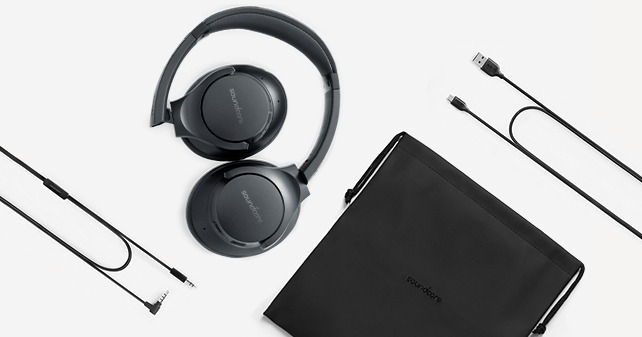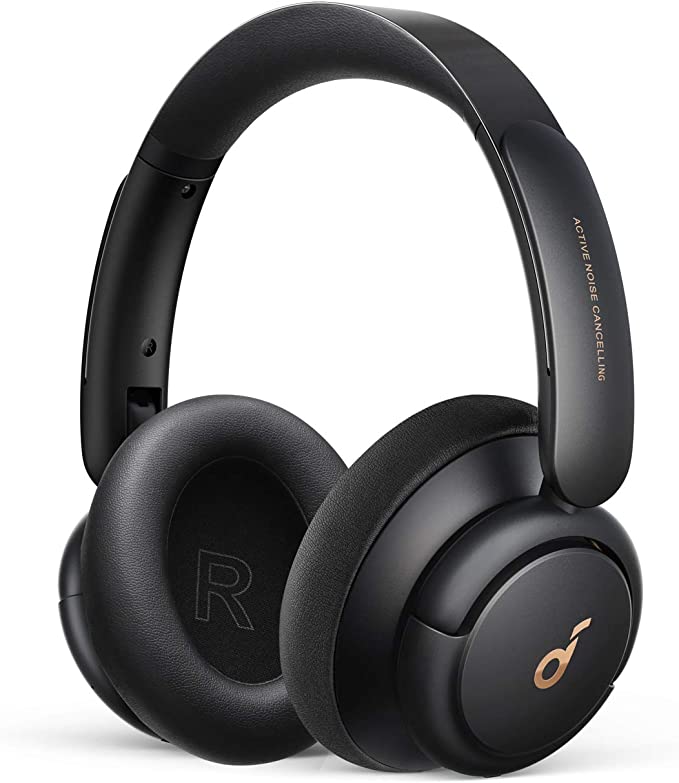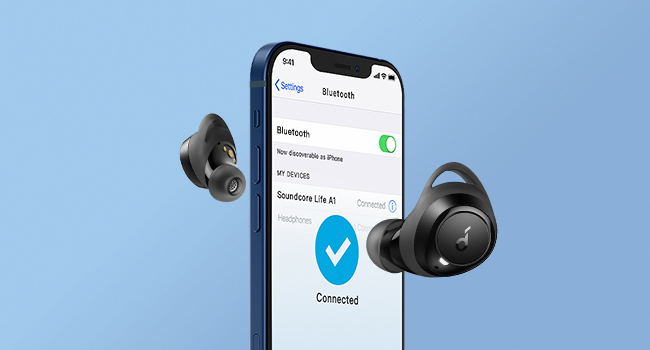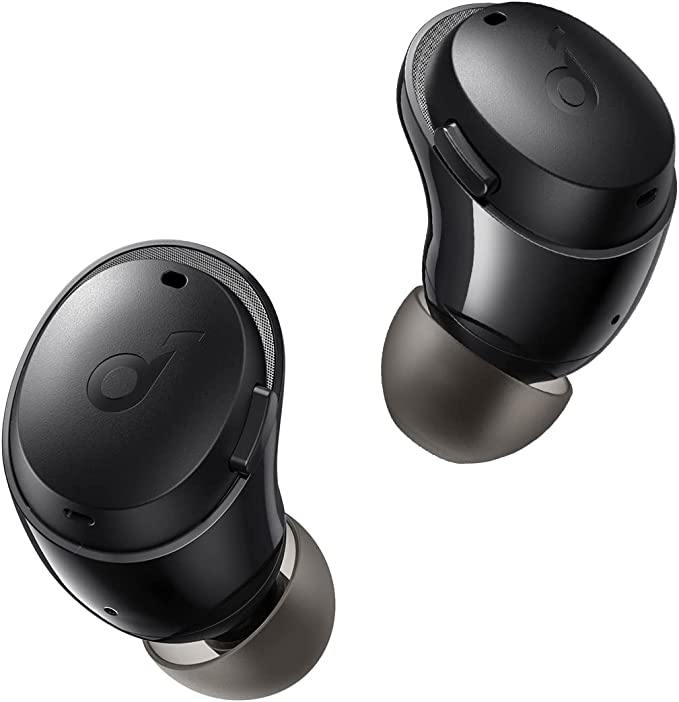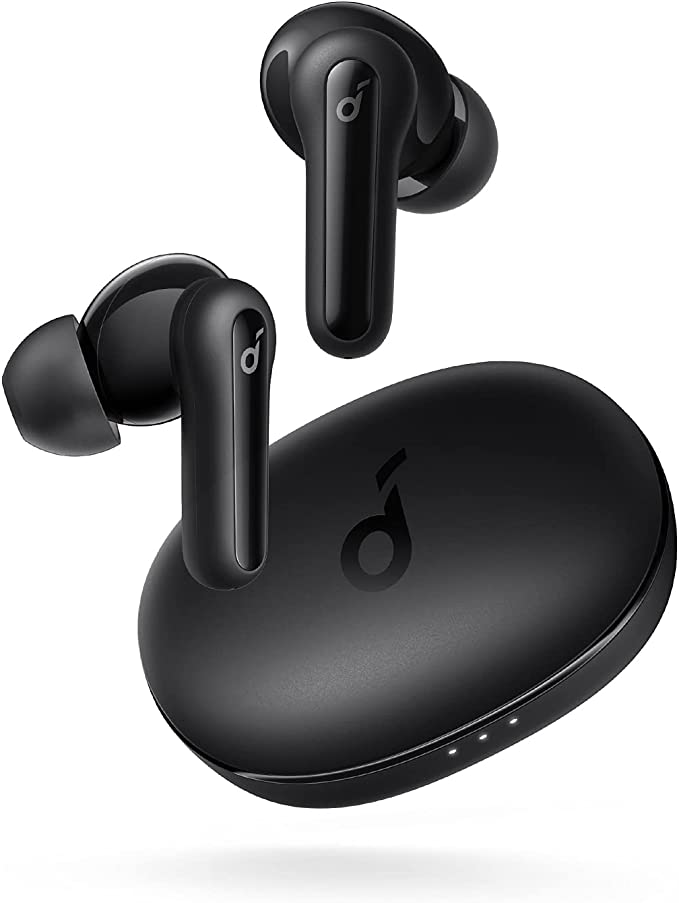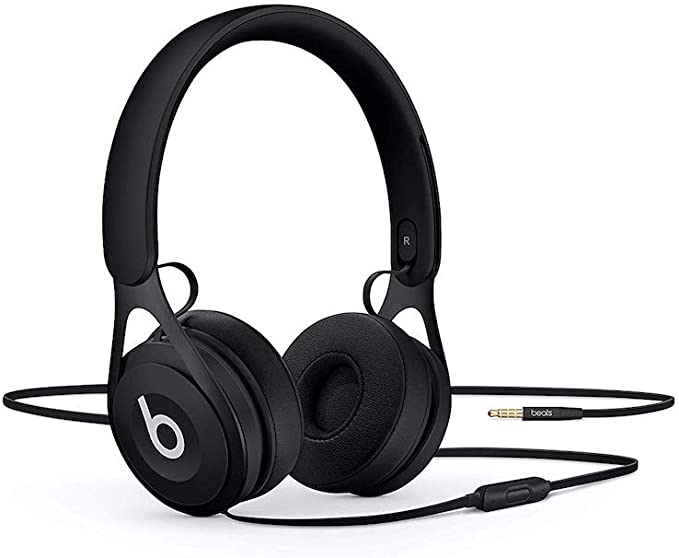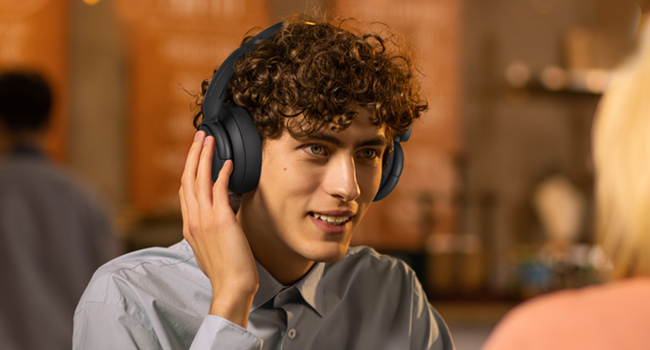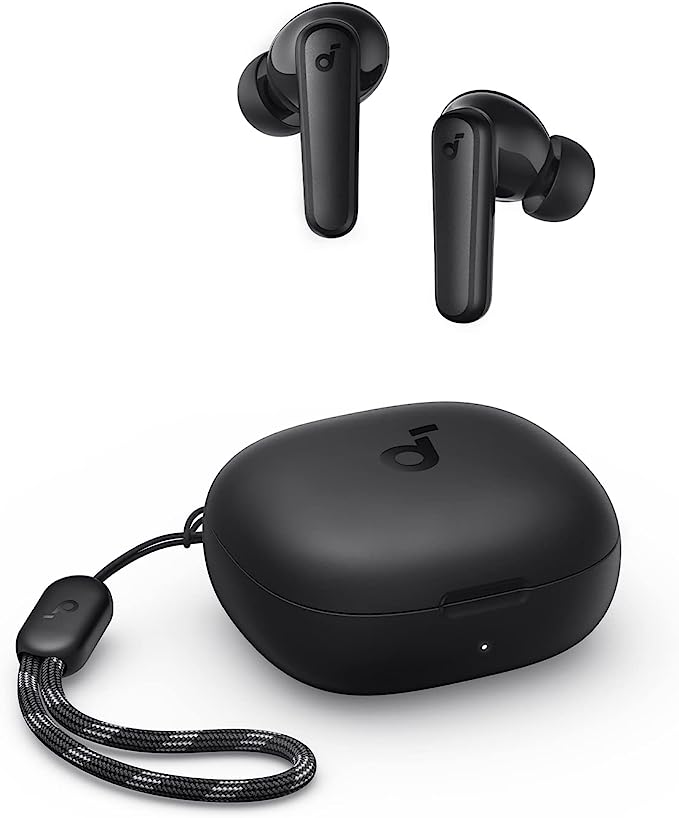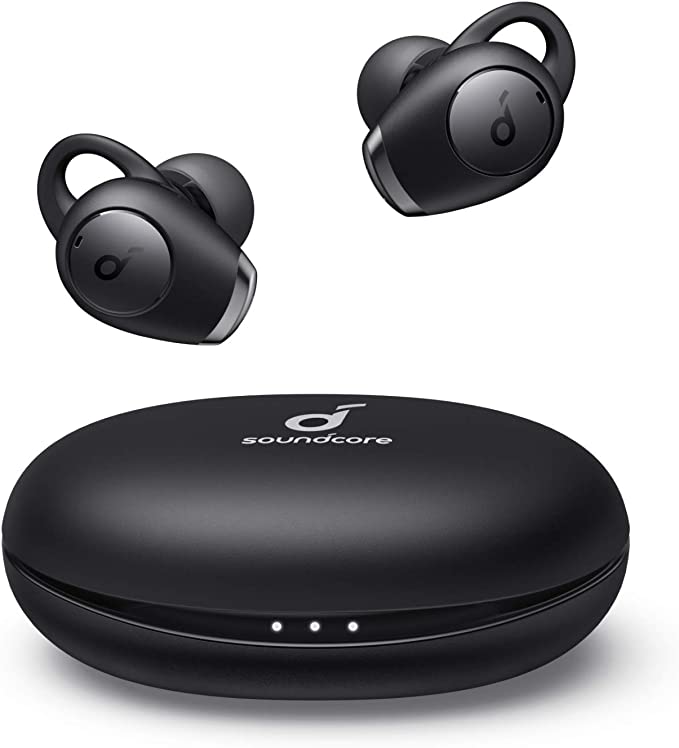CosyFame pink-a2 Wireless Earbuds: Enjoy Stable Connection and Superior Sound
Update on March 7, 2025, 6:25 p.m.
We live in an era increasingly dominated by wireless technology. From smartphones to smart homes, the cords that once tethered us to our devices are rapidly disappearing. One of the most ubiquitous examples of this trend is the rise of wireless earbuds. These tiny devices have revolutionized how we listen to music, podcasts, and audiobooks, offering freedom and convenience that wired headphones simply can’t match. But how do they actually work? Let’s delve into the fascinating science behind wireless audio, using the CosyFame pink-a2 earbuds as a case study.
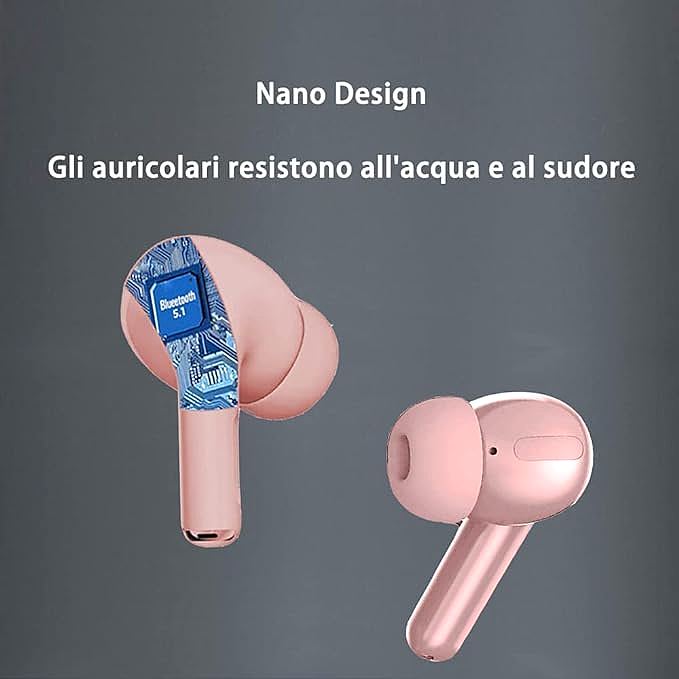
The Rise of Wireless Audio: A Brief History
The dream of transmitting audio without wires isn’t new. It dates back to the late 19th century, with early experiments in radio broadcasting. Guglielmo Marconi’s pioneering work in sending radio signals across the Atlantic in 1901 marked a pivotal moment. Throughout the 20th century, radio technology advanced, leading to the development of wireless microphones and, eventually, wireless headphones. However, these early systems were often bulky, expensive, and prone to interference.
The real breakthrough came with the development of Bluetooth technology in the late 1990s. Created by Ericsson, Bluetooth was designed as a short-range wireless communication standard, initially intended to replace cables for connecting peripherals like printers and mice. It didn’t take long for engineers to realize its potential for audio applications.

Untangling the Wires: Why Go Wireless?
Before we dive into the technical details, let’s consider why wireless earbuds have become so popular. The advantages are clear:
- Freedom of Movement: No more tangled wires restricting your movement, whether you’re working out, commuting, or simply relaxing at home.
- Convenience: Easy to put on and take off, with no need to plug and unplug cables.
- Portability: Small and lightweight, making them easy to carry around.
- Compatibility: Works with a wide range of devices, including smartphones, tablets, and computers.
These benefits address common pain points associated with wired headphones, such as cable tangling, restricted movement, and the risk of damaging the cable or headphone jack.

Bluetooth: The Invisible Connection
Bluetooth is the heart of most wireless earbuds, including the CosyFame pink-a2. It’s a short-range wireless communication technology that operates in the 2.4 GHz ISM (Industrial, Scientific, and Medical) band, a globally unlicensed frequency range.
Here’s a simplified explanation of how Bluetooth works:
- Pairing: When you pair your earbuds with your phone (or other device), they establish a secure, one-to-one connection. This involves exchanging unique identification codes, ensuring that only your devices communicate with each other.
- Radio Waves: Bluetooth uses radio waves to transmit data. These waves are low-power, which helps to conserve battery life.
- Frequency Hopping: To minimize interference from other devices operating in the same frequency band (like Wi-Fi routers), Bluetooth uses a technique called frequency hopping. The devices rapidly switch between different frequencies within the 2.4 GHz band, making it less likely that they’ll experience sustained interference.
- Data Packets: Audio data is broken down into small packets and transmitted wirelessly. These packets are reassembled at the receiving end to recreate the audio signal.
Bluetooth 5.0: A Significant Leap Forward
The CosyFame pink-a2 utilizes Bluetooth 5.0, a major upgrade over previous versions. Here’s what makes it superior:
- Increased Speed: Bluetooth 5.0 offers double the data transfer speed of Bluetooth 4.2, reaching up to 2 Mbps. This reduces latency (the delay between the audio source and your ears) and improves audio quality, especially for high-resolution audio.
- Extended Range: Bluetooth 5.0 can theoretically achieve a range of up to 800 feet (240 meters) in open air, although real-world performance is typically lower due to obstacles and interference. The CosyFame pink-a2 specifies a range of 40 feet (15 meters), which is still a significant improvement over older Bluetooth versions.
- Enhanced Power Efficiency: Bluetooth 5.0 incorporates features to reduce power consumption, extending the battery life of both the earbuds and the connected device. This is crucial for small, battery-powered devices like earbuds.
- Dual Audio: It supports connecting to two device.
LE Audio: The Next Generation
LE Audio, or Low Energy Audio, is a newer Bluetooth audio technology built upon the Bluetooth Low Energy (BLE) standard. Although the provided specifications don’t say, It’s worth noting because it represents a significant advancement in wireless audio. LE Audio promises:
- Improved audio quality at lower bitrates, thanks to a new codec called LC3 (Low Complexity Communication Codec).
- Even lower power consumption than Bluetooth 5.0, further extending battery life.
- Multi-Stream Audio: The ability to stream audio to multiple devices simultaneously.
- Hearing Aid Support: Improved support for hearing aids and assistive listening devices.
While it’s unclear if the CosyFame pink-a2 supports LE Audio, it’s a technology to watch out for in future wireless audio products.
Addressing Common Bluetooth Issues
Despite its advancements, Bluetooth can sometimes be finicky. Here are some common issues and their potential causes:
- Connection Drops: Interference from other wireless devices (Wi-Fi routers, microwaves), physical obstacles (walls, furniture), or exceeding the Bluetooth range can cause connection drops.
- Pairing Problems: Sometimes, devices fail to pair correctly. This can be due to software glitches, incompatibility issues, or the presence of too many nearby Bluetooth devices.
- Audio Stuttering: This can be caused by interference, low battery, or a weak Bluetooth signal.
From Digital to Analog: The Journey of Sound
The music stored on your phone or computer is in digital format – a series of 0s and 1s. However, our ears can only hear analog sound waves. This means that a crucial conversion process must take place within the earbuds.
Digital Audio Basics
Before we get to the conversion, let’s briefly touch on some key concepts in digital audio:
- Sampling Rate: This refers to the number of times per second that the analog sound wave is “sampled” or measured. Higher sampling rates (e.g., 44.1 kHz, 48 kHz, 96 kHz) capture more detail and result in higher fidelity audio.
- Bit Depth: This determines the dynamic range and resolution of the audio signal. Higher bit depths (e.g., 16-bit, 24-bit) provide a wider range of volume levels and reduce quantization noise (a type of distortion).
Audio Codecs: The Translators of Sound
To transmit audio wirelessly over Bluetooth, the digital audio signal needs to be compressed. This is where audio codecs come in. A codec is essentially an algorithm that encodes (compresses) and decodes (decompresses) digital audio. Here are two common Bluetooth audio codecs:
- SBC (Subband Coding): This is the mandatory, default codec for all Bluetooth audio devices. It’s relatively simple and doesn’t require much processing power, but its audio quality is generally considered to be the lowest.
- AAC (Advanced Audio Coding): AAC is a more advanced codec that offers better audio quality than SBC at similar bitrates. It’s widely supported by Apple devices and is becoming increasingly common in Android devices as well.
It’s important to note: The provided specifications for the CosyFame pink-a2 do not mention which specific audio codec(s) it supports. This is a crucial piece of information for assessing audio quality. Ideally, we’d want to see support for AAC (or even aptX, another higher-quality codec, though it’s less common in budget-friendly earbuds).
The Digital-to-Analog Converter (DAC)
Once the compressed audio data is transmitted to the earbuds, it needs to be decoded and converted back into an analog signal. This is the job of the Digital-to-Analog Converter (DAC). The DAC takes the digital audio data and reconstructs the original analog waveform, which is then sent to the earbud’s drivers to produce sound. The quality of the DAC can significantly impact the overall sound quality.
Inside the Earbud: Tiny Components, Big Sound
Let’s take a peek inside the CosyFame pink-a2 (metaphorically speaking, of course!) to understand the key components that produce sound.
Drivers: The Heart of the Earbud
The driver is the most crucial component for sound production. It’s essentially a tiny loudspeaker that converts electrical signals into sound waves. There are several types of drivers commonly used in earbuds:
- Dynamic Drivers: These are the most common type. They use a diaphragm attached to a voice coil, which is suspended in a magnetic field. When an electrical signal passes through the voice coil, it creates a magnetic field that interacts with the permanent magnet, causing the diaphragm to vibrate and produce sound. Dynamic drivers are generally good at producing bass and are relatively inexpensive.
- Balanced Armature Drivers: These are smaller and more efficient than dynamic drivers. They use a tiny armature (a small, pivoting piece of metal) that is balanced within a magnetic field. When an electrical signal passes through a coil wrapped around the armature, it causes the armature to vibrate, which in turn vibrates a diaphragm to produce sound. Balanced armature drivers are known for their detail and clarity, especially in the mid and high frequencies.
Again, the specifications for the CosyFame pink-a2 do not specify the driver type or size. This is another important piece of missing information. Without this, it’s difficult to make definitive statements about the earbud’s sound signature.
Acoustic Chamber: Shaping the Sound
The space around the driver, known as the acoustic chamber, plays a vital role in shaping the sound. The size, shape, and materials of the chamber affect how sound waves resonate and interact, influencing the earbud’s frequency response, soundstage, and overall tonal balance.
MEMS Microphones
Micro-Electro-Mechanical System (MEMS) microphones. These tiny devices are marvels of engineering, packing a complete microphone system onto a single silicon chip.They are known for reliable performance.
Powering the Experience: Battery Technology
Wireless earbuds rely on batteries to function. The CosyFame pink-a2, like most modern wireless earbuds, uses lithium-ion batteries.
Lithium-ion Batteries: The Power Source
Lithium-ion batteries are popular because they offer a high energy density (meaning they can store a lot of energy in a small space), a relatively long lifespan, and no “memory effect” (meaning you don’t have to fully discharge them before recharging).
Battery Capacity and Playtime
The CosyFame pink-a2 boasts a total playtime of 30 hours with the charging case and 5-6 hours on a single earbud charge. The charging case has a 1000mAh battery, and each earbud has a 100mAh battery.
Charging Cases: Extending the Fun
The charging case serves two primary functions:
- Storage: It provides a safe and convenient place to store the earbuds when not in use.
- Charging: It contains a larger battery that can recharge the earbuds multiple times, extending the overall playtime.
Comfort and Fit: The Science of Ergonomics
An often-overlooked aspect of wireless earbuds is their comfort and fit. Even the best-sounding earbuds will be unpleasant to use if they don’t fit well.
The Importance of Earbud Fit
A good fit is crucial for several reasons:
- Comfort: Well-fitting earbuds won’t cause discomfort or pain, even during extended use.
- Sound Isolation: A snug fit helps to block out external noise, improving the listening experience.
- Sound Quality: A proper seal ensures that the sound is delivered directly to your ear canal, maximizing bass response and overall clarity.
- Secure and stable: Preventing it from falling.
Ergonomic Design Principles
Ergonomics is the science of designing products to fit the human body. When it comes to earbuds, ergonomic design considers factors like:
- Ear Shape: Human ears come in a variety of shapes and sizes. Earbuds need to be designed to accommodate this variation.
- Weight Distribution: The weight of the earbuds should be evenly distributed to prevent pressure points.
- Materials: The materials used should be soft, comfortable, and hypoallergenic.
The 35-Degree Tilt
The CosyFame pink-a2 features a 35-degree tilted in-ear design. This angle is intended to align the earbud with the natural angle of the ear canal, providing a more comfortable and secure fit.

IPX5: protection and meaning
IPX5 is a rating within the broader Ingress Protection (IP) code system, a standard established by the International Electrotechnical Commission (IEC). This rating specifically indicates the level of protection an electronic device offers against the intrusion of liquids.
* IP: Stands for “Ingress Protection.”
* X: The ‘X’ in IPX5 means there’s no specified rating for protection against solid particles (like dust). It doesn’t mean it has no protection, just that it hasn’t been tested or rated for it.
* 5: This digit signifies the level of protection against liquids. A ‘5’ rating means the device is protected against water jets.
* Water Jets: Specifically, it means the device can withstand water projected by a nozzle (6.3 mm) from any direction. The test involves spraying the device with water at a specified flow rate and pressure for a certain duration.
What IPX5 Doesn’t Mean:
- Submersion: IPX5 does not mean the device is waterproof enough to be submerged in water. Ratings of IPX7 and IPX8 are required for submersion.
- High-Pressure Water: While it can handle water jets, it’s not designed for high-pressure water streams or powerful waves.

The Future of Wireless Audio
Wireless audio technology is constantly evolving. Here are some emerging trends and technologies to watch out for:
- Higher-Resolution Audio: As streaming services offer higher-quality audio files, we’ll see more earbuds supporting codecs capable of transmitting these files wirelessly without significant loss of quality.
- Spatial Audio: Technologies like Dolby Atmos and Apple’s Spatial Audio create a more immersive, three-dimensional listening experience.
- Advanced Noise Cancellation: Active Noise Cancellation (ANC) technology is becoming increasingly sophisticated, offering better noise reduction and more customizable settings.
- AI-Powered Features: Artificial intelligence is being used to enhance various aspects of the wireless audio experience, such as personalized sound profiles, automatic EQ adjustments, and improved voice assistant integration.
- Biometric Sensors

Long-Term Use: Potential Issues and Mitigation:
- Hearing Loss: The potential for hearing damage.
- Ear Infections
- Earwax Buildup:
